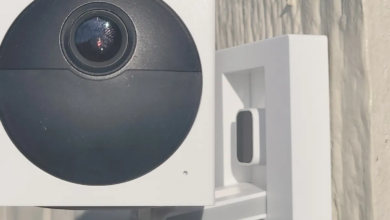Creating a Podcast: From Recording to Publish 2023

In the dynamic landscape of digital media, creating a podcast has emerged as a powerful and accessible means of sharing content. Whether you’re a seasoned content creator or a beginner exploring the realm of podcasting, understanding the comprehensive process “From Recording to Publish” is essential for producing a high-quality and engaging podcast series. This guide will walk you through the step-by-step journey of creating a podcast, from the initial recording stages to the final, critical step of publishing your content for a global audience.
Creating a Podcast
Embarking on the podcasting journey requires a combination of technical know-how, creativity, and strategic planning. The first steps involve setting up your recording space, selecting the right equipment, and mastering the art of recording and editing. As we delve into the intricacies of podcast creation, we will explore the nuances of each stage, providing insights into choosing the appropriate hosting platforms, effective promotion strategies, and crafting content that captivates your audience. Whether you’re an aspiring podcaster or seeking to enhance your existing skills, this guide serves as a comprehensive resource for transforming your ideas into a polished and publishable podcast series.
Getting Started
Choosing a Niche
Selecting a niche is the foundation of a successful podcast. Whether it’s true crime, business, or personal development, finding your unique angle will attract a dedicated audience.
Planning Your Episodes
Craft a content plan that outlines your episode topics, formats, and release schedule. Consistency is key to building an engaged listener base.
Selecting Equipment
Investing in quality recording equipment is crucial. From microphones to audio interfaces, ensure your setup delivers clear, professional-sounding episodes.
Read More: Adobe Podcast’s text-based editing turns limitation into liberation
Recording Your Podcast
Setting up a Recording Space
Create a quiet, controlled environment for recording. Minimize background noise and distractions to produce high-quality audio.
Recording Techniques
Learn effective recording techniques, such as proper microphone usage and pacing. Experiment with different approaches to find your podcasting style.
Editing Your Podcast
Editing is where your podcast comes to life. Use software to enhance audio quality, remove mistakes, and add music or effects for a polished final product.
Crafting Compelling Content
Storytelling Techniques
Master the art of storytelling to keep your audience engaged. A well-told story resonates with listeners and keeps them coming back for more.
Engaging with Your Audience
Foster a connection with your audience through social media and listener feedback. Respond to comments and questions to build a community around your podcast.
Integrating Guests
Feature guests to bring diverse perspectives to your podcast. Prepare insightful questions and create a welcoming atmosphere for your guests.
Podcast Artwork and Branding
Designing Eye-Catching Artwork
Your podcast artwork is the first impression listeners get. Invest time in creating visually appealing and relevant artwork that represents your podcast.
Creating a Consistent Brand
Develop a consistent brand across your podcast and promotional materials. A cohesive brand enhances recognition and professionalism.
Podcast Hosting Platforms
Overview of Hosting Platforms
Explore various hosting platforms like Libsyn, Podbean, and Anchor. Consider factors like pricing, analytics, and ease of use before making a decision.
Choosing the Right Platform
Select a hosting platform that aligns with your podcasting goals. Look for features like unlimited storage, detailed analytics, and seamless distribution.
Optimizing for SEO
Keyword Research for Podcasts
Creating a Podcast: Apply SEO principles to your podcast by conducting keyword research. Use relevant keywords in your episode titles, descriptions, and show notes to improve discoverability.
Writing SEO-Friendly Episode Titles and Descriptions
Craft compelling and descriptive episode titles and descriptions that not only attract listeners but also include keywords to enhance search engine visibility.
Promoting Your Podcast
Social Media Strategies
Creating a Podcast: Utilize social media platforms to promote your episodes. Create engaging posts, leverage relevant hashtags, and interact with your audience to expand your reach.
Collaboration and Cross-Promotion
Collaborate with other podcasters in your niche. Cross-promote episodes to tap into each other’s audiences and broaden your podcast’s exposure.
Leveraging Email Marketing
Creating a Podcast: Build an email list to directly reach your audience. Share exclusive content, updates, and behind-the-scenes insights to keep your listeners engaged.
Monetizing Your Podcast
Sponsorships and Ads
Creating a Podcast: Explore sponsorship opportunities and ads to monetize your podcast. Ensure that sponsorships align with your content and resonate with your audience.
Listener Support and Donations
Creating a Podcast: Offer listener support options, such as Patreon or Buy Me a Coffee, to allow your audience to contribute and support your podcast financially.
Measuring Success
Analytics and Metrics
Creating a Podcast: Regularly analyze podcast analytics to understand listener demographics, popular episodes, and listener retention. Use these insights to refine your content and strategy.
Adjusting Your Strategy
Creating a Podcast: Stay flexible and adapt your podcasting strategy based on feedback and performance metrics. Experiment with new formats, topics, or promotional tactics to optimize your approach.
Challenges and Solutions
Future Trends in Podcasting
Emerging Technologies
Creating a Podcast: Stay updated on emerging technologies shaping the podcasting landscape. Explore opportunities presented by innovations like interactive content or virtual reality experiences.
Evolving Audience Preferences
Creating a Podcast: Adapt to changing audience preferences. Stay attuned to listener feedback and market trends to ensure your podcast remains relevant and engaging.
Read More: Rekkies smart snow goggles prove that AR is useful right now
Conclusion
In conclusion, embarking on the journey of creating a podcast from recording to publishing in 2023 is an exciting venture filled with opportunities and challenges. By following the outlined steps and embracing the evolving landscape of podcasting, you can pave the way for a successful and fulfilling podcasting experience.
Starting with the foundational elements of selecting a niche and planning episodes, the importance of quality recording equipment and effective editing techniques cannot be overstated. Crafting compelling content through storytelling and audience engagement sets the stage for building a dedicated listener base.
Equally vital is the visual representation of your podcast through artwork and branding, creating a recognizable and professional image. Choosing the right hosting platform and optimizing for SEO enhance your podcast’s discoverability, ensuring it reaches a broader audience.
Promotion is key to a podcast’s success, with social media strategies, collaboration, and email marketing playing crucial roles. Monetization avenues such as sponsorships and listener support open doors to making your podcast financially sustainable.
FAQs
How long does it take to launch a podcast from scratch?
Launch times vary, but planning, recording, and launching your first few episodes can take anywhere from a few weeks to a couple of months.
Do I need expensive equipment to start a podcast?
While quality equipment enhances your podcast, there are budget-friendly options available. Focus on clear audio and upgrade as your podcast grows.
What is the ideal podcast episode length?
The ideal length depends on your content and audience. Aim for a duration that keeps listeners engaged, typically between 20 to 60 minutes.
How can I attract sponsors for my podcast?
Build a solid audience base, and reach out to companies relevant to your niche. Highlight your podcast’s engagement and demographics in your pitch.
Is it necessary to host on multiple platforms?
While it’s not mandatory, hosting on multiple platforms increases your podcast’s accessibility. Consider popular platforms like Apple Podcasts, Spotify, and Google Podcasts.











